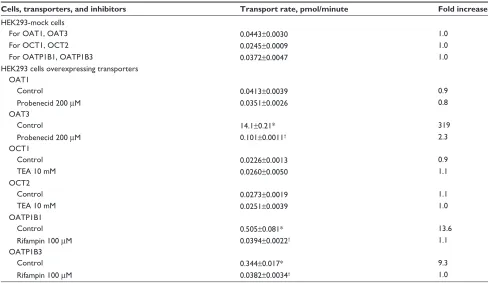Organic anion transporter 3- and organic anion transporting polypeptides 1B1- and 1B3-mediated transport of catalposide
Full text
Figure




Related documents
Objective: We compared the motor evoked potential (MEP) phases using transcranial magnetic stimulation in patients with idiopathic generalized epilepsy (IGE), their relatives,
We report here a case of intraosseous CEOT developed from the left posterior maxilla with maxillary sinus and buccal vestibule mucosa extension.. A comprehensive im-
Following the validation, an extensive finite element parametric study is conducted to study the influences of a range of parameters, and the results are
Nitrendipine demonstrated a protective influence on the function and structure of rat liver preserved for transplantation and maintained its action throughout perfusion, especially
the communication barrier with their physicians, and Interpreter as a mitigation process of communication barrier and associated challenges. Physicians are mostly concerned about
Thus, we first consider the literature providing molecular and genetic supports to the idea that VitD status modulates innate and adaptive immune responses and hence vaccine
Based on the service model for DVOs introduced in Section 2.2 and driven by the analysis of existing Grid accounting approaches (cf. Section 2.1 ), a generic accounting model

